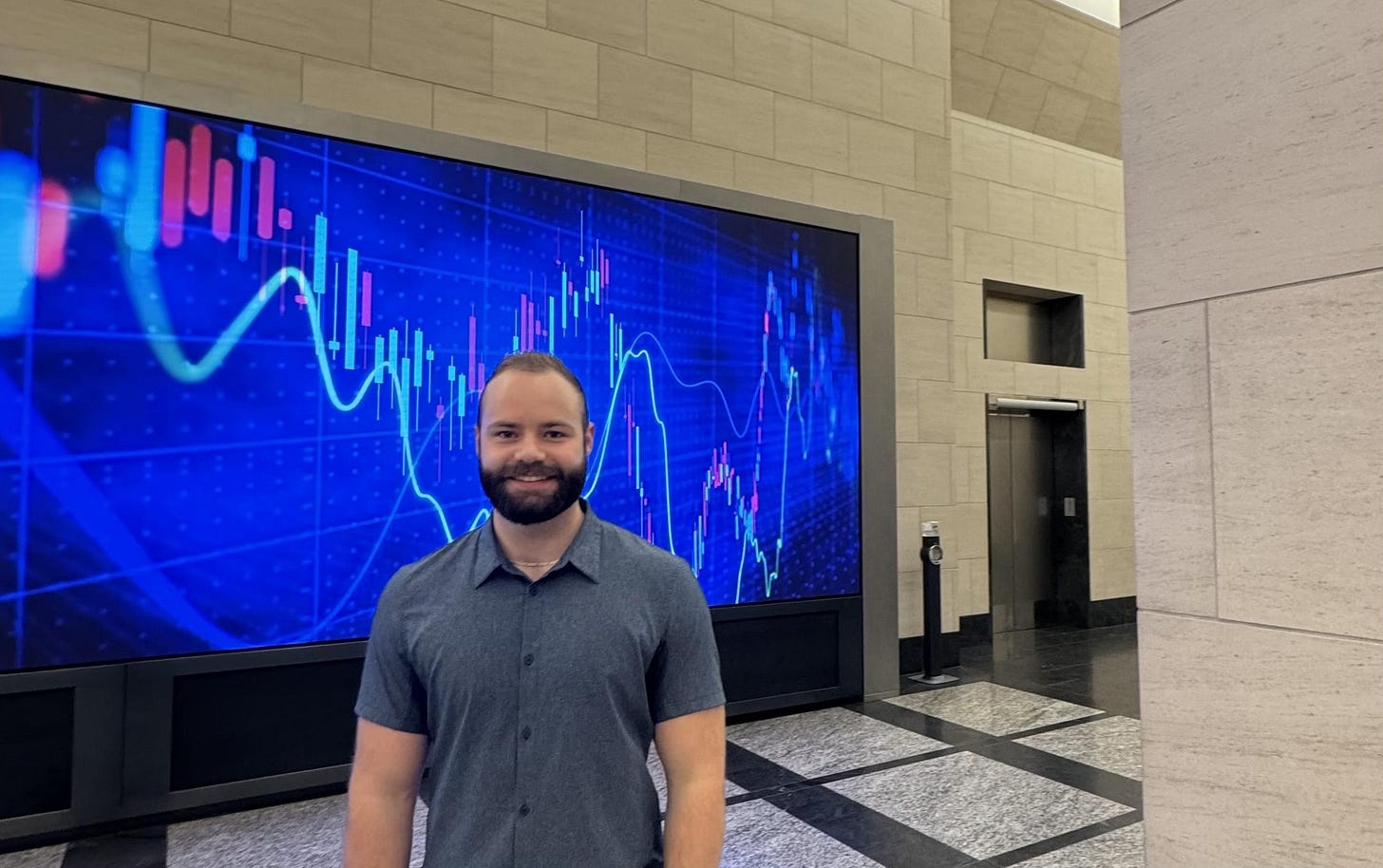Fed Pivot Day: Preparation On Goldman Sachs' Lower Manhattan Trading Floor
FLASHBACK TO SEPTEMBER 18TH, 2024
On September 18th, I visited Goldman Sachs’ Lower Manhattan headquarters during the Federal Reserve’s pivotal interest rate decision—the first cut of the current cycle.
As I walked through the trading floor (where no photos are allowed), I was struck by the precision and coordination on display. It was a living example of how complex systems can operate seamlessly under pressure.
A modern trading floor is a sprawling, high-tech hive of activity, lined with rows of desks bristling with multiple monitors displaying real-time market data, complex algorithms, and breaking news feeds. The energy is palpable yet controlled, as the quiet hum of voices and keystrokes replaces the chaotic shouting of the past, creating an atmosphere where precision and focus reign supreme. It might not have the same atmosphere as the what’s shown in classic Wall Street movies, but the lessons for business leaders are abundant.
Here are three things I found most useful regarding how Goldman Sachs prepared to handle the uncertainty of the widely anticipated event:
1. Scenario Analysis
Prior to the Federal Reserve meeting, prediction markets were split on whether the interest rate cut would be 25 basis points or 50 basis points. Instead of trying to predict exactly what the FOMC members would decide to do, Goldman’s teams had analyzed the implications of each scenario. While some of the analysis inevitably became obsolete, it deepened their understanding of market dynamics and provided a base to develop contingency plans for each scenario.
2. Systematization
Many market participants react to market events like the Fed Pivot as they cross the tape, relying haphazardly on their instincts in the heat of the moment. To avoid emotional decision making, Goldman Sachs’ traders quantitatively modelled the risks of each scenario and systematized how they would respond. From pre-defined delta hedging protocols to portfolio stress tests, every trader operated within a framework designed to minimize downside exposure while still capitalizing on opportunities. Some pods of traders were focused on complex derivatives while others focused on sector baskets, but each knew exactly how they would execute before the event happened, stripping away the decision fatigue and minimizing risk.
3. Collaboration
Since Goldman Sachs was handling multiple client orders and portfolios, communication between the sales teams and trading teams was paramount. Despite most processes being handled digitally, the trading floor is organized so that both departments are in close proximity to each other, promoting collaboration and decreasing the cycle time from problem to solution if any obstacles arise in order execution. The sales teams and trading teams worked together like clockwork, knowing exactly who to go to for specific requests.
In fast-moving, high-stakes environments, Goldman Sachs’ approach during the Federal Reserve’s pivotal interest rate decision showcases the value of strategic preparation and disciplined execution.
The combination of rigorous scenario analysis, systematized responses, and seamless collaboration provides a clear framework for navigating uncertainty—one that transcends finance and offers lessons for leaders across industries. Whether managing a trading floor or steering a business through a complex decision, these principles highlight the power of thoughtful planning, clear communication, and decisive action. Observing this in practice underscored the enduring relevance of operational excellence in achieving success amidst volatility, offering inspiration for anyone striving to lead with foresight and resilience.
Disclaimer
The information provided herein is for informational purposes only and does not constitute financial advice, investment advice, trading advice, or any other sort of advice. The views and opinions expressed are those of the author and do not necessarily reflect the official policy or position of any other agency, organization, employer, or company. The information provided is based on the current market conditions and is subject to change without notice. Readers are encouraged to perform their own research and due diligence and consult with a qualified financial advisor before making any investment decisions. Past performance is not indicative of future results. All investments involve risk, including the possible loss of principal. The reader assumes the entire cost and risk of any investing and trading they choose to undertake.





